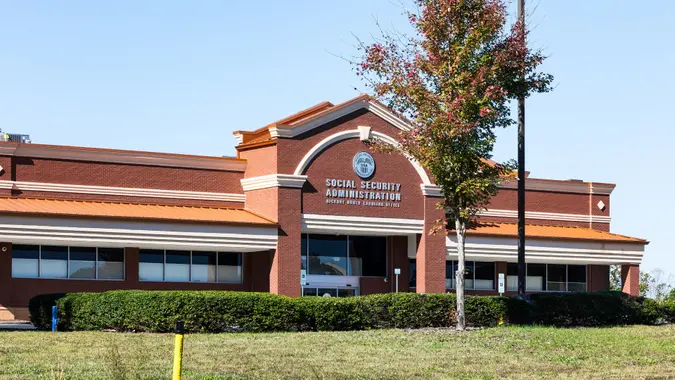Targeted by a Security Fairness Act Scam? How To Report Social Security Fraud

Commitment to Our Readers
GOBankingRates' editorial team is committed to bringing you unbiased reviews and information. We use data-driven methodologies to evaluate financial products and services - our reviews and ratings are not influenced by advertisers. You can read more about our editorial guidelines and our products and services review methodology.

20 Years
Helping You Live Richer

Reviewed
by Experts

Trusted by
Millions of Readers
The Social Security Fairness Act, which was signed into law in January, extended Social Security benefits to federal employees, railroad employees and civil servants whose jobs aren’t covered by Social Security. In addition to beginning or increasing benefits for these workers and their eligible family members, the law calls for a one-time retroactive Social Security payment.
These changes could tempt scammers to defraud Social Security beneficiaries who are waiting for their new or increased benefits and payments. Here’s how to ensure you aren’t among those tricked into giving out sensitive information, and what to do if you believe you were scammed.
How To Recognize a Social Security Fairness Act Scam
The Social Security Administration (SSA) noted on its website that the agency will never charge a fee to start or increase your benefits, or issue a retroactive payment. A phone call, letter, text, email or social media message asking you for payment is a major red flag that someone is trying to scam you.
Other, more subtle signs include:
- Requests for your personal information to process changes to your benefits
- Offers to transfer your money to a secure account
- Pressure to immediately respond to the scammer’s requests
Fraud attempts can be quite convincing. Letters and emails, for example, often look official, and if you click a link in an email, text or message, it could take you to a fake social media profile or web page that looks nearly identical to the real thing.
Scammers can also “spoof” official phone numbers to make it appear as though the calls are coming from the SSA or other government offices, or even from your local police or sheriff’s department.
How To Report a Social Security Scam
The SSA’s Office of the Inspector General investigates Social Security fraud of all types, and you can file a report by calling the OIG’s hotline at 800-269-0271.
You can also file by filling out a form on the OIG’s Social Security scam-reporting web page, located here. At the bottom of the form, you’ll be asked to create a five-digit PIN that will be available only to OIG employees. Anyone who follows up with you from the OIG office should know that PIN; if they don’t, hang up or ignore the communication and call the hotline directly.
More From GOBankingRates
Sources
- Social Security Administration (SSA), Social Security Fairness Act: Windfall Elimination Provision (WEP) and Government Pension Offset (GPO) update
- Congress.gov, Social Security: The Windfall Elimination Provision (WEP) and the Government Pension Offset (GPO)
- SSA, Protect Yourself from Scams
- SSA, Fraud Prevention and Reporting
 Written by
Written by  Edited by
Edited by 
























